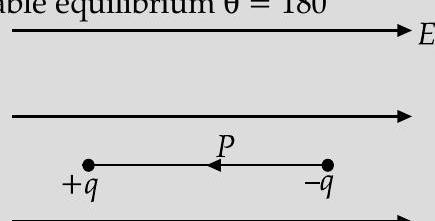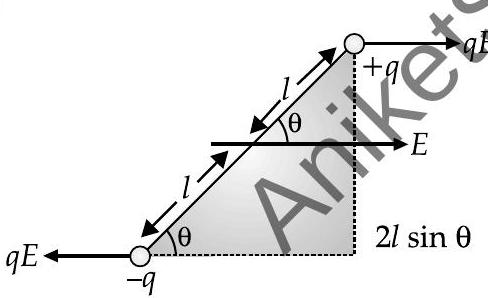Question: Q. 9. A particle of mass
A [Delhi Comptt. I, II, III, 2012]
Show Answer
Solution:
Ans. Here,
As the particle enters opposite to the field, so it will retard.
Acceleration
Using,
1
[CBSE Marking Scheme, 2012]
Unstable equilibrium

[CBSE Marking Scheme, 2017]
(AI) Q. 2. (i) Obtain the expression for the torque
(ii) What will happen if the field were not uniform?
R [Delhi III 2017]
Ans. (i) Obtaining expression for torque
(ii) Effect of non-uniform electric field
(i) Force on
Force on
Magnitude of torque
(ii) If the electric field is non-uniform, the dipole experiences a translatory force as well as a torque.
[CBSE Marking Scheme, 2017]
Detailed Answer :
(i)

Consider electric dipole kept in an uniform electric field at an angle
(ii) When the field is non-uniform, force acting on both ends will not be equal, hence they result in mixture of couple and net force. With this, dipole experiences rotational as well as linear force.






